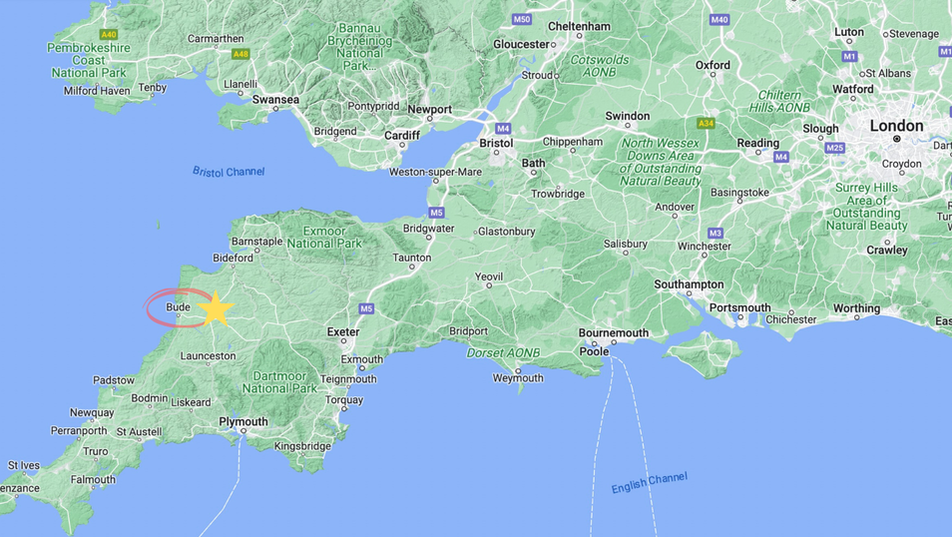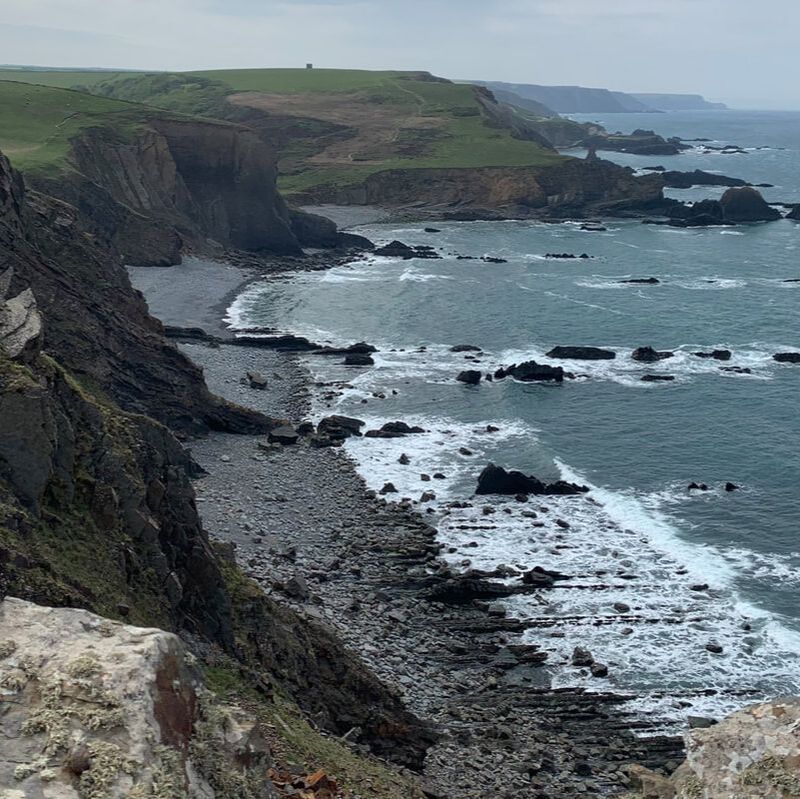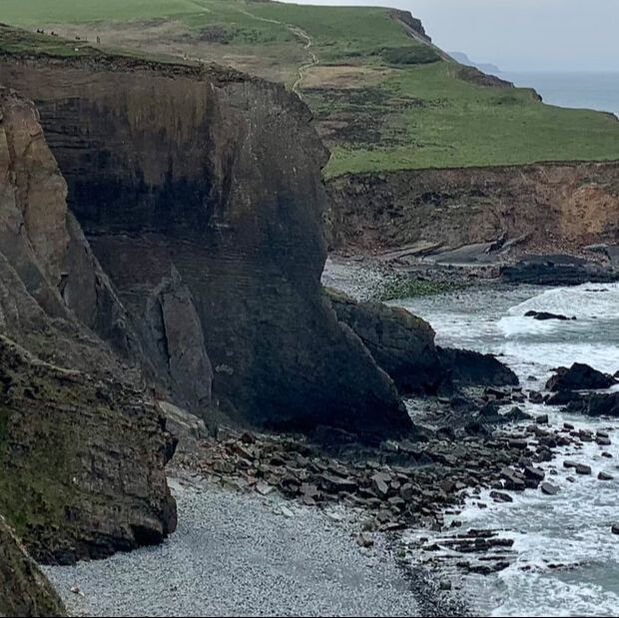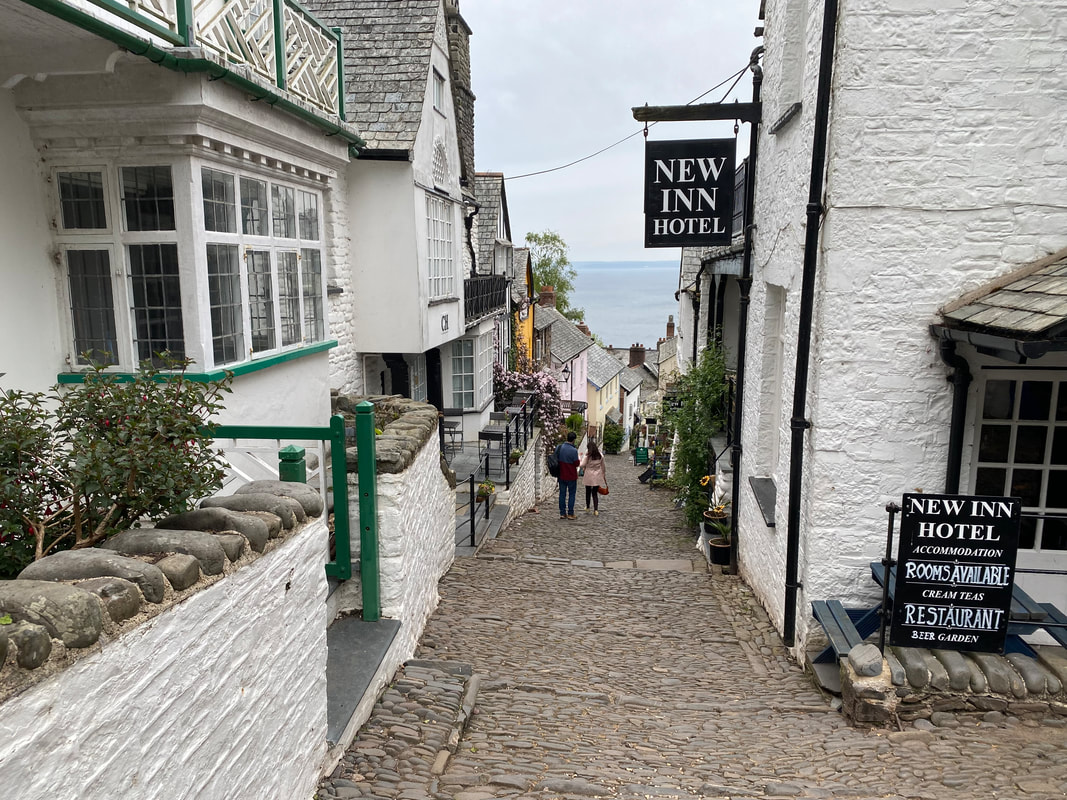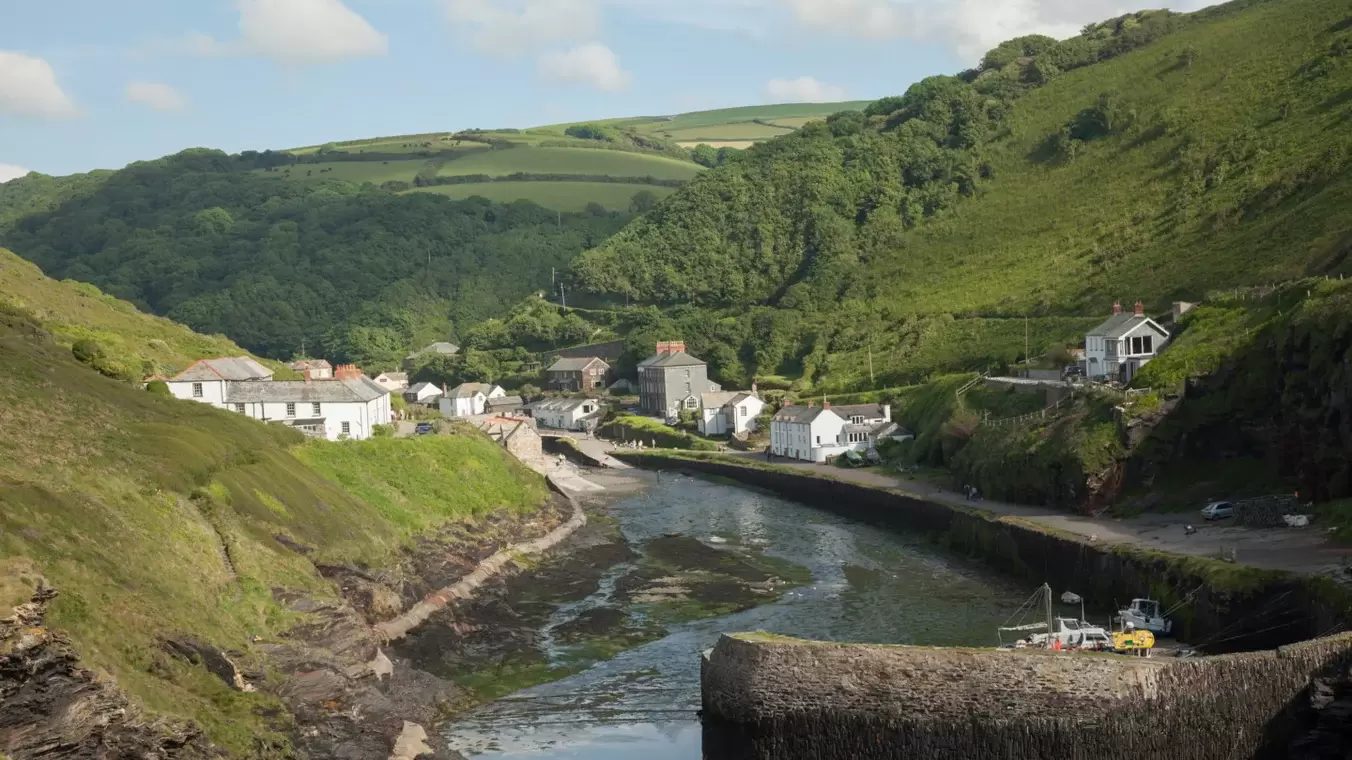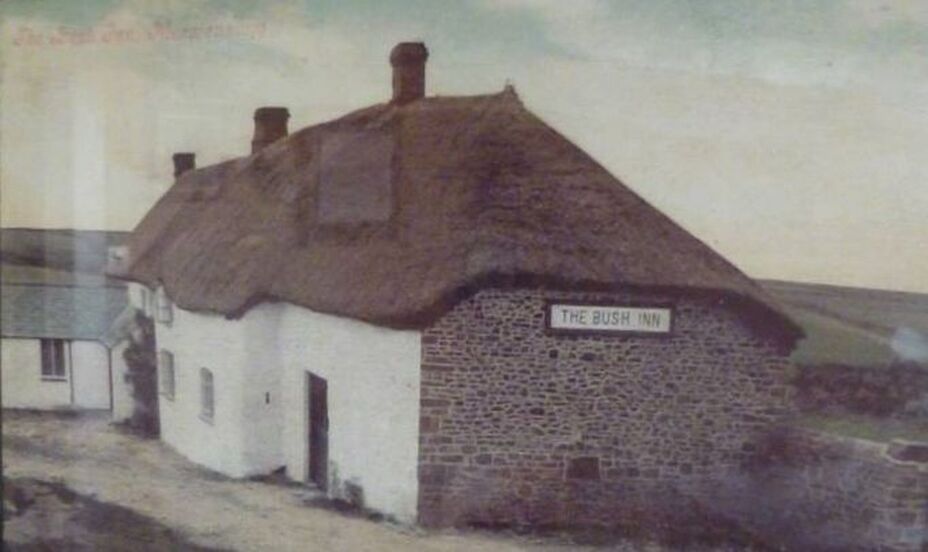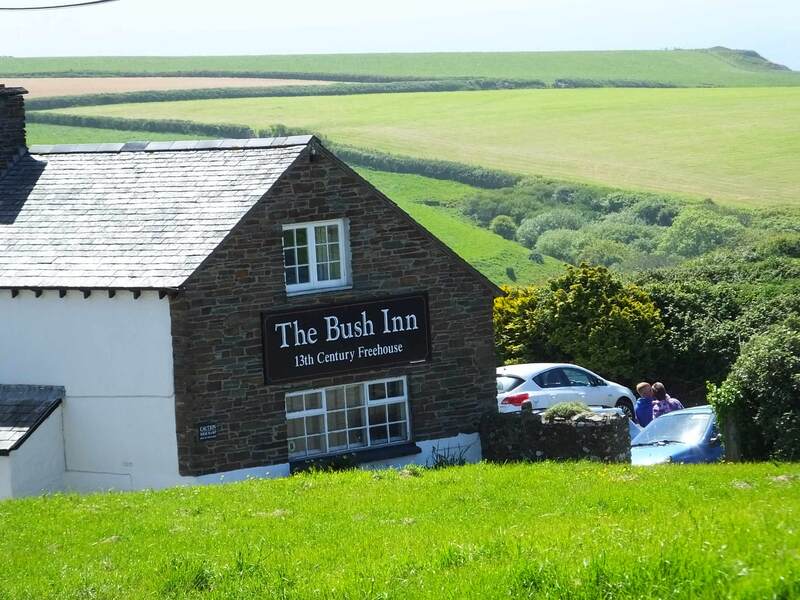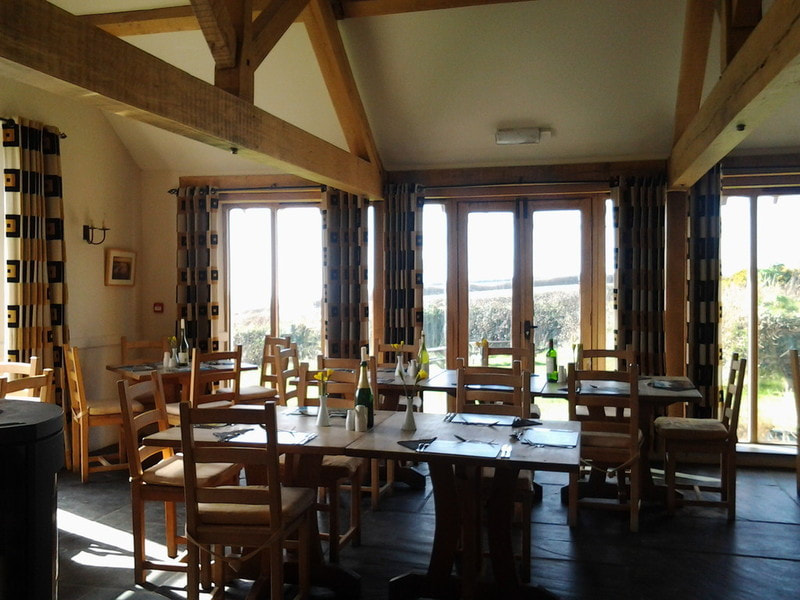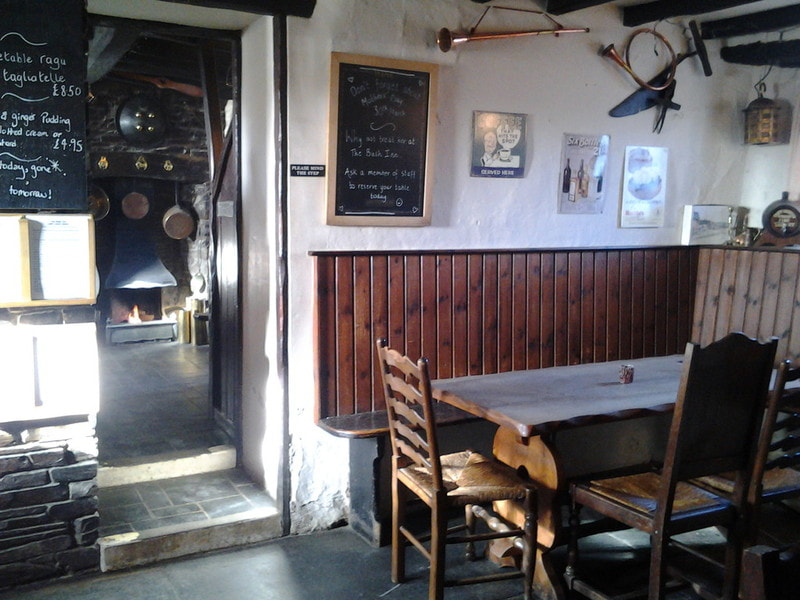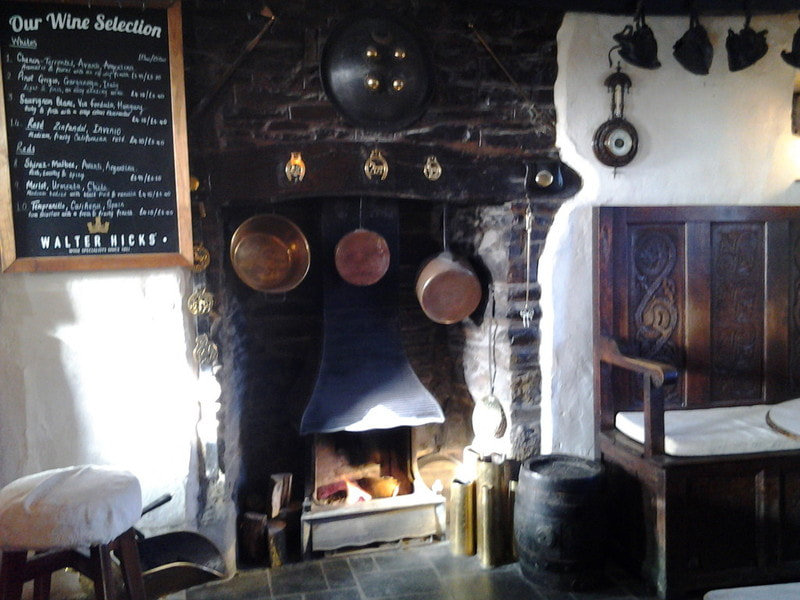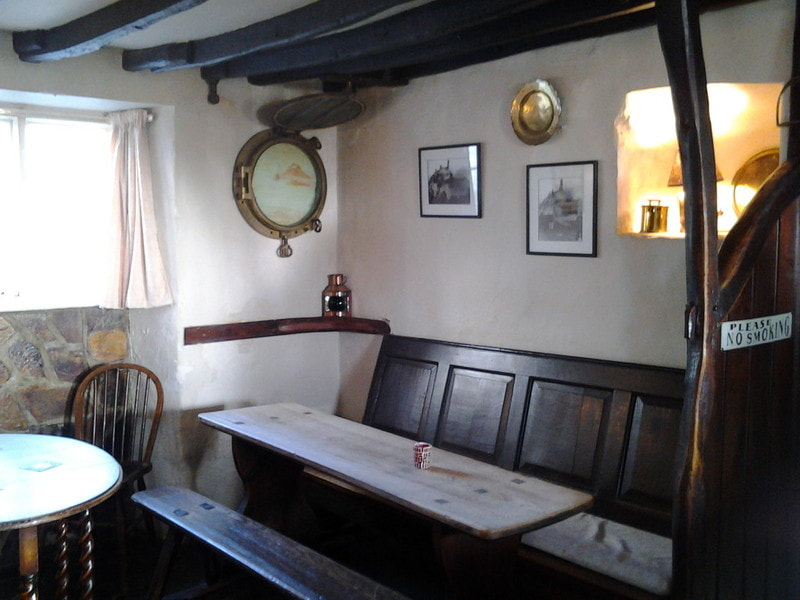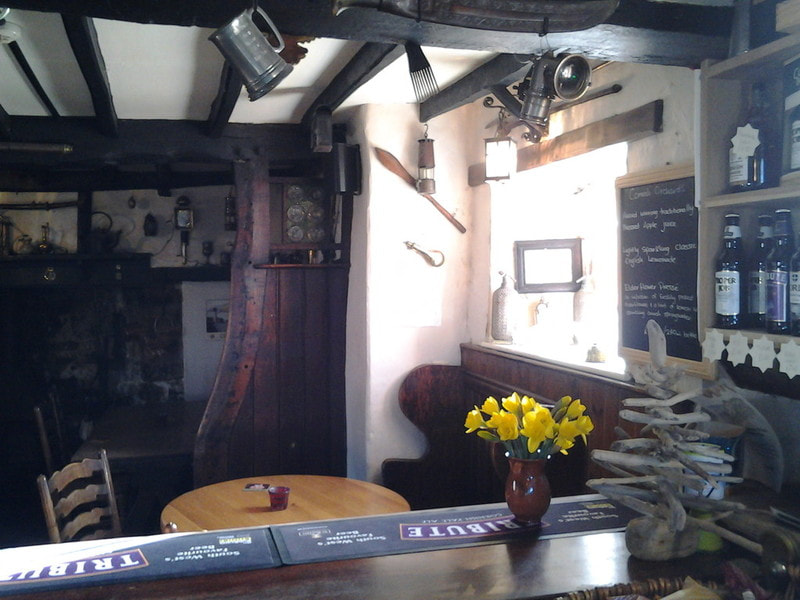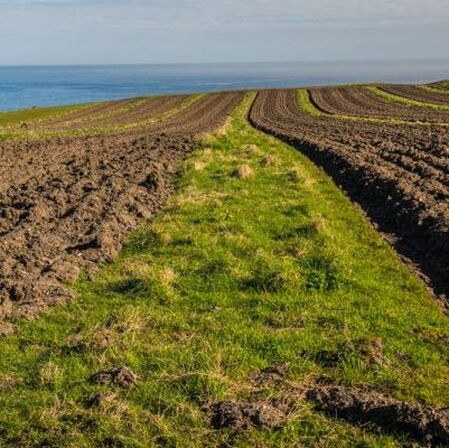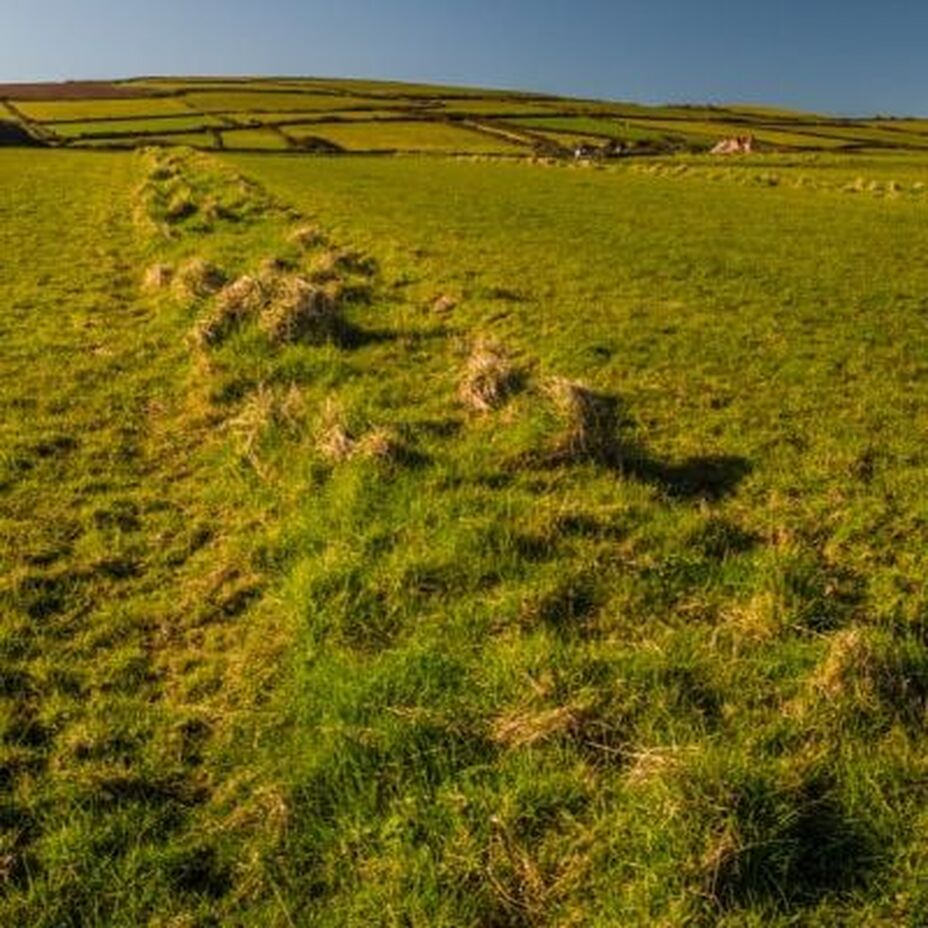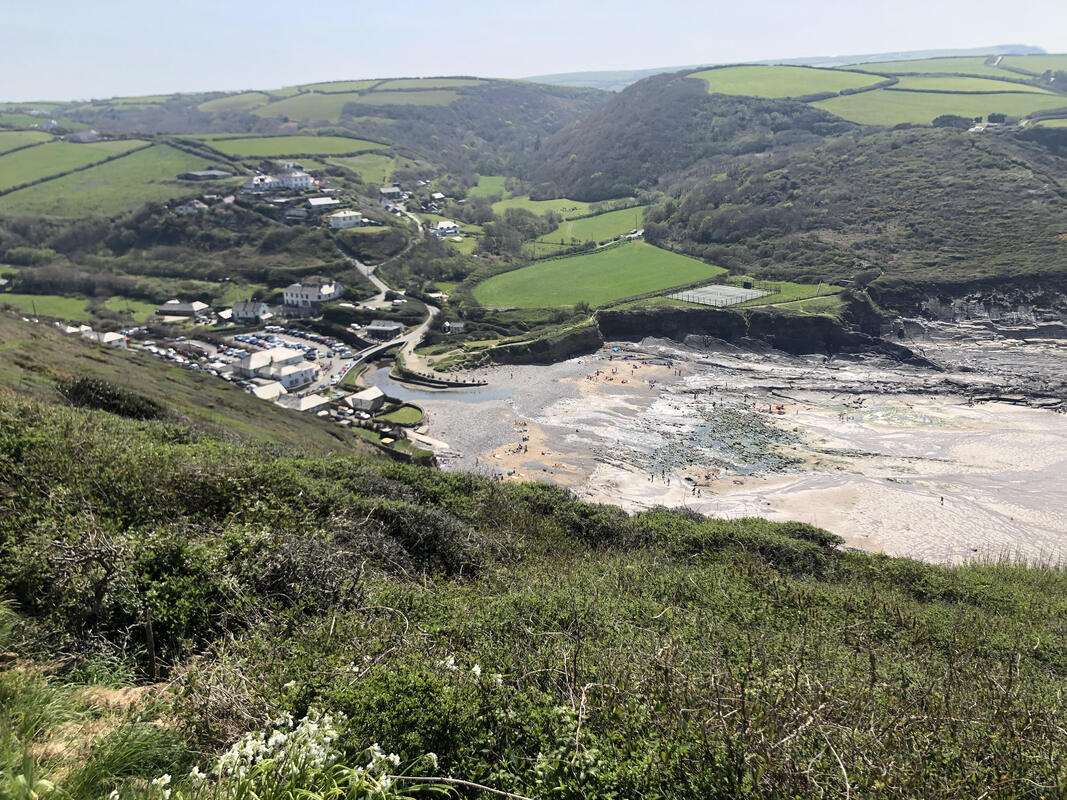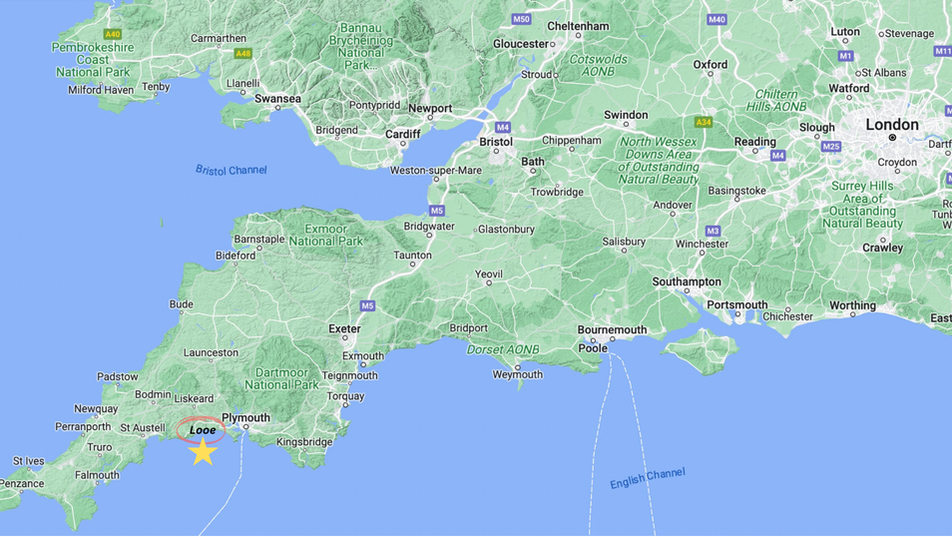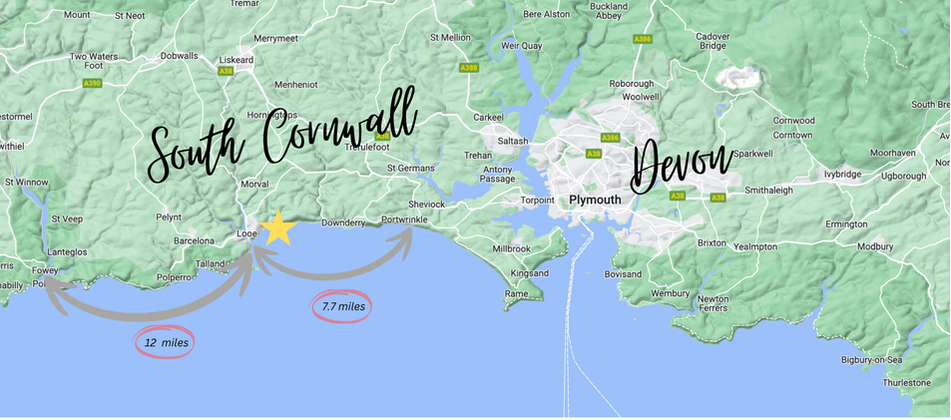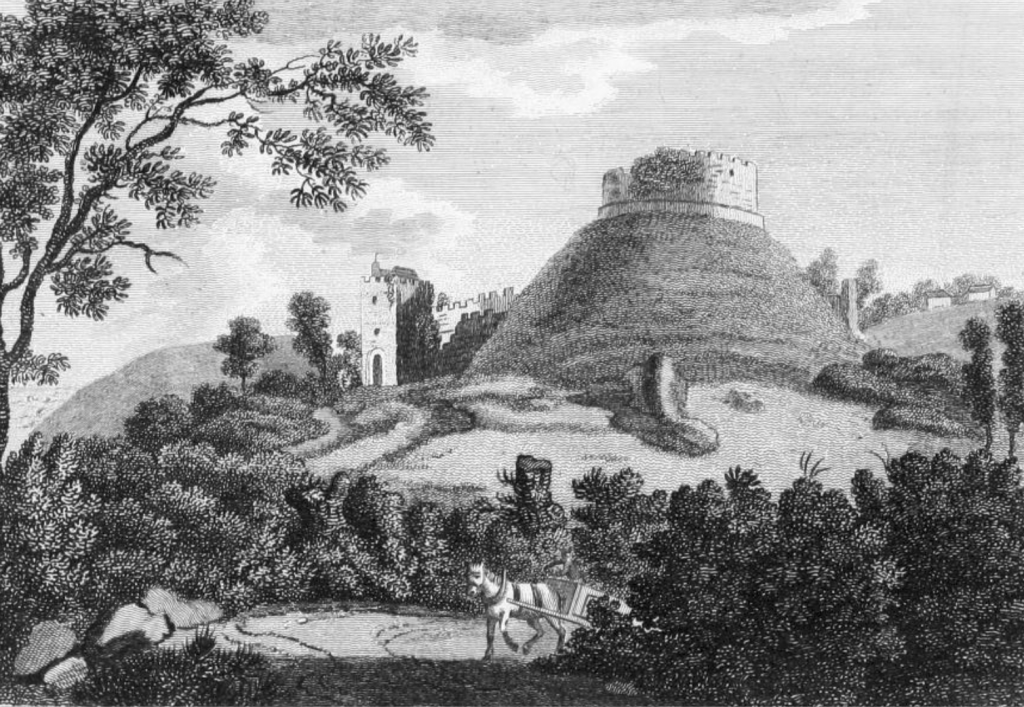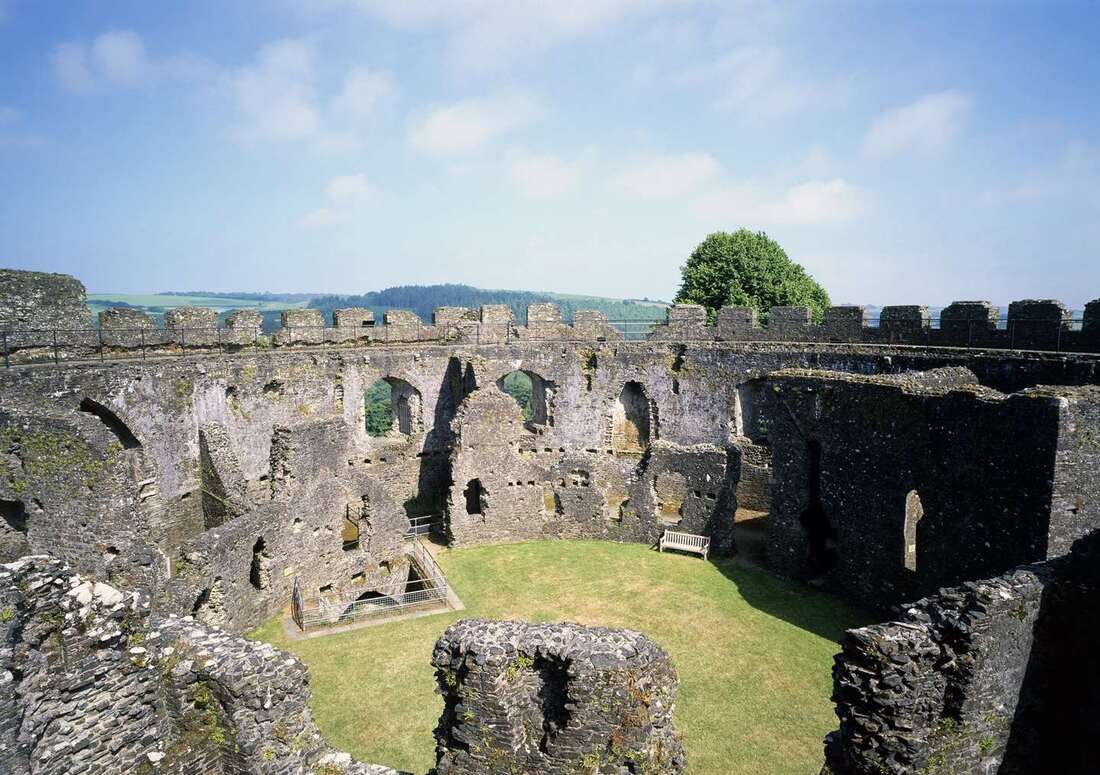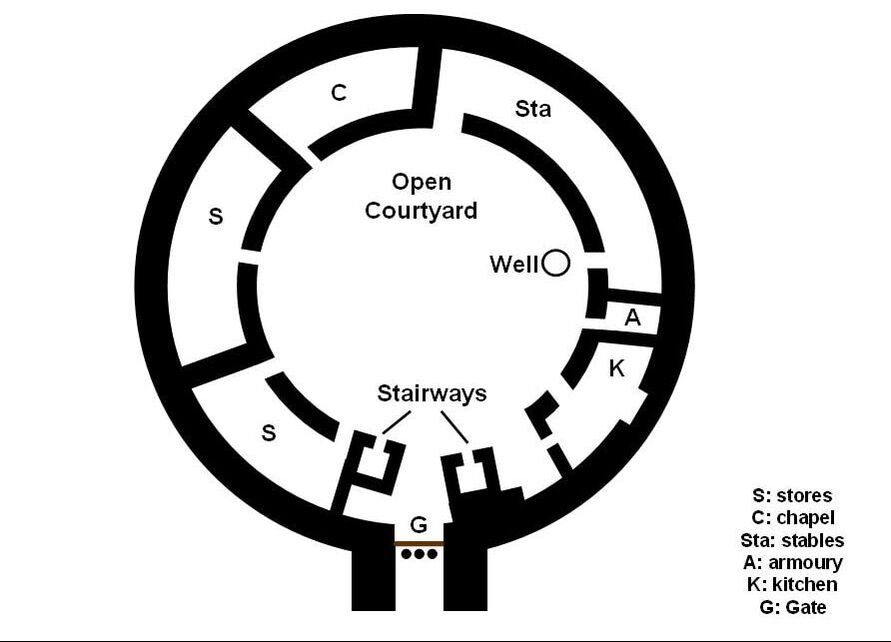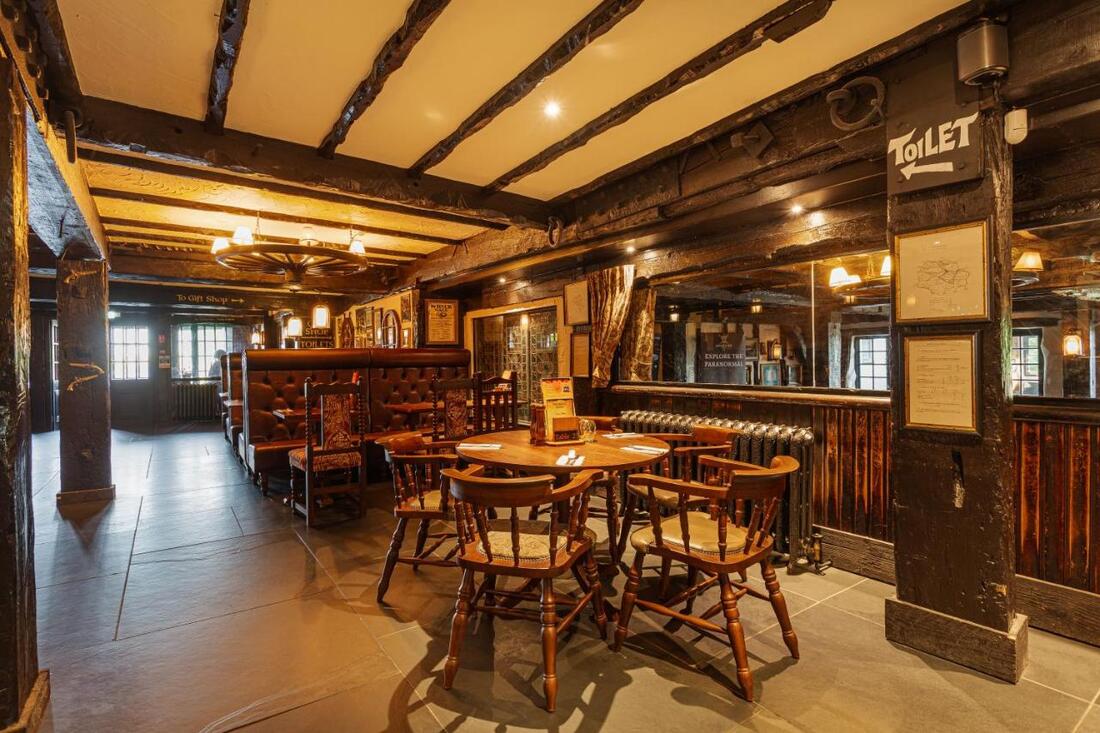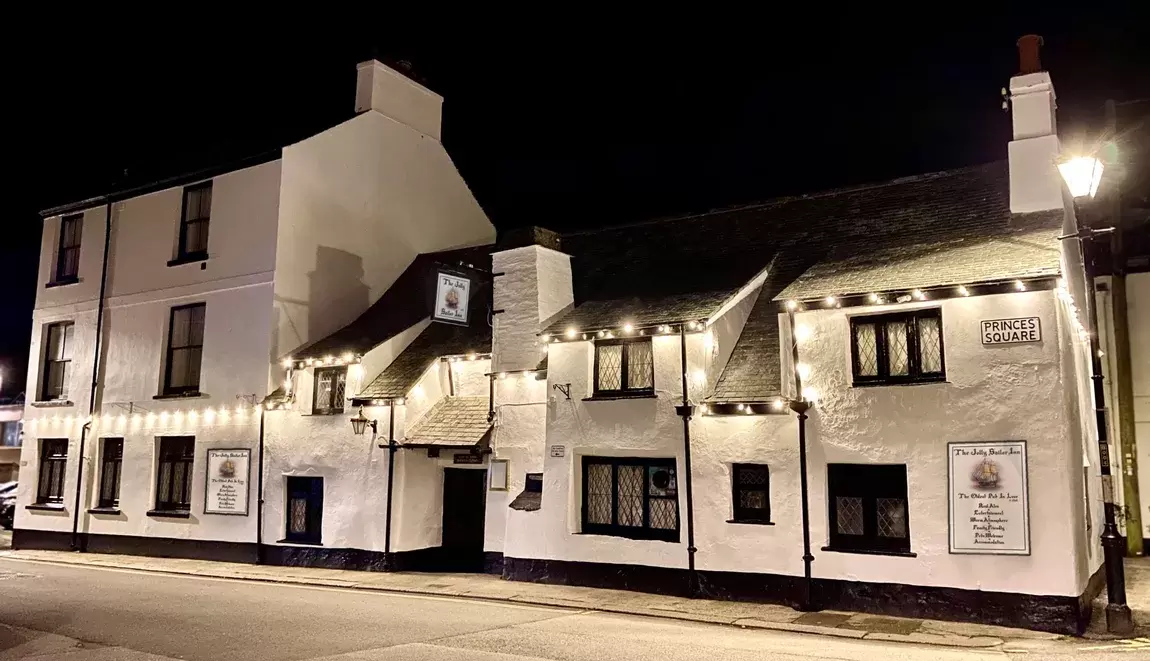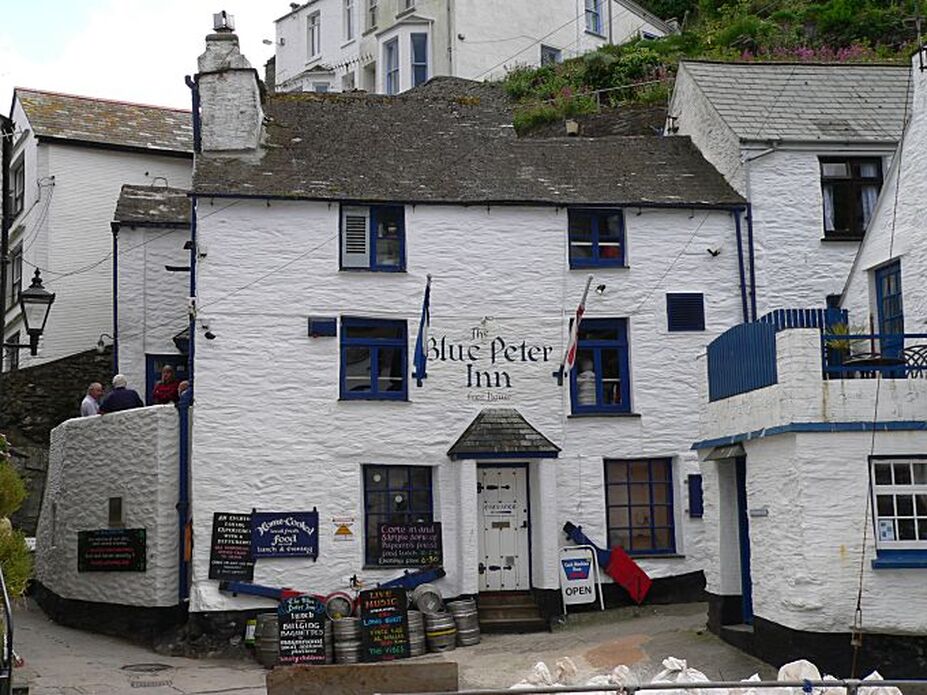MAY 2024
BUDE AREA
WALKING HEARTLAND QUAY TO PORT ISAAC ON THE SWCP
5 SWCP HIKES:
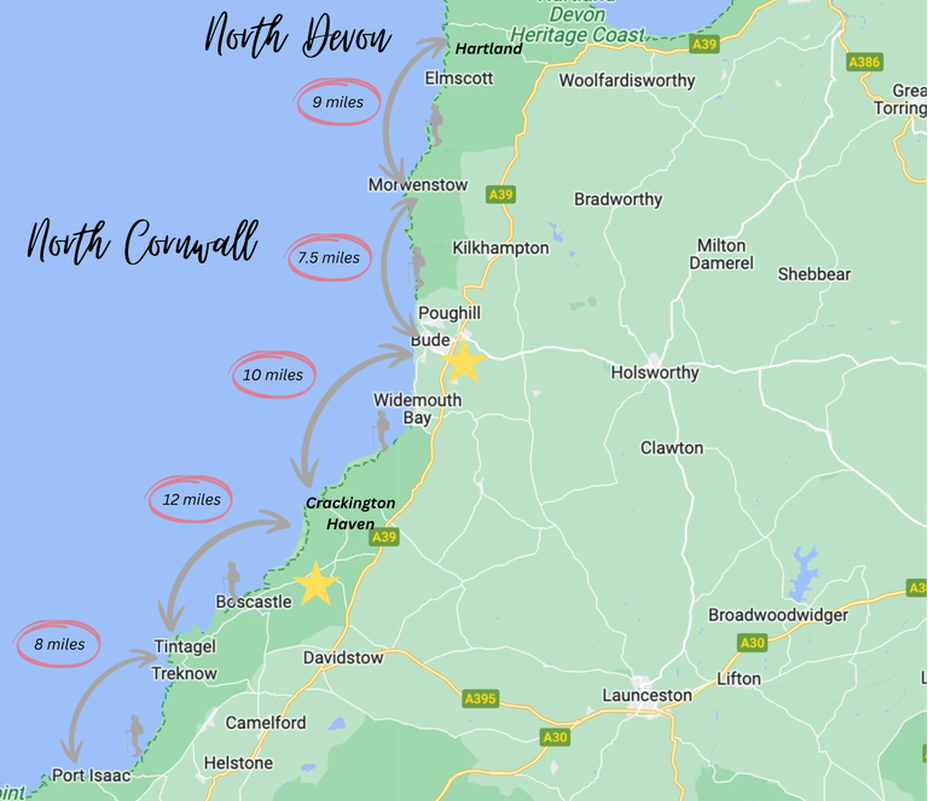
The SWCP goes right through Bude, which is super convenient for catching buses, which is how we usually get back and forth from our walks though we also hitch rides and cabs and trains. This area of the path takes in some of the most dramatic and remote scenery of the entire Cornish section of the trail, with breathtaking cliff-top views and formidable climbs and descents. The guide books all agree that this section of the SWCP is strenuous and one of the toughest sections of the trail. Keeping this in mind, we're planning shorter hikes for the day and extra ibuprofen for the knees.
PLACES TO CHECK OUT:
Hartland Quay
A former port, Hartland has been battered and hardened by the elements over time. It's wild and remote and unlike any other section of the SWCP. It's difficult to get here and there are very few places to stop along the trail for buses or food. Bob and I have done Hartland Quay to Minehead and now need to hook up with Port Isaac in the other direction.
Once we complete this section, we will closed the gap from Minehead to Fowey. (When we first started walking the path in 2012, we hiked all over the southwest with no real rhyme or reason except that we wanted to explore different regions. These days we are filling in the gaps.
Once we complete this section, we will closed the gap from Minehead to Fowey. (When we first started walking the path in 2012, we hiked all over the southwest with no real rhyme or reason except that we wanted to explore different regions. These days we are filling in the gaps.
Clovelly
Perched perilously on the steep slope of a 400-foot cliff, the tiny village of Clovelly was originally owned by William the Conqueror, King of England, which is cool for us history buffs. Until the middle of the 19th century Clovelly was pretty much unknown to the outside world. The cobbled high street tumbles straight down to the sea, sandwiched in between traditional 16th century whitewashed cottages festooned with lots of fuchsias and geraniums. There are no cars allowed, and for many years donkeys were the only transportation. Today villagers use wooden sledges to bring items up and down.
Tintagel
Just outside the tiny village of Tintagel you can see the ruins of Tintagel Castle, legendary birthplace of King Arthur. I've been wanting to go here for years. King Arthur! History! Fantastic hiking! Probably good food! In my book, that's everything you need.
Tintagel Old Post Office
This 14th-century yeoman's farmhouse has a famously wavy slate roof and over 600 years of history. In the Victorian period it was briefly the letter-receiving station for the district. Maybe we can go inside.
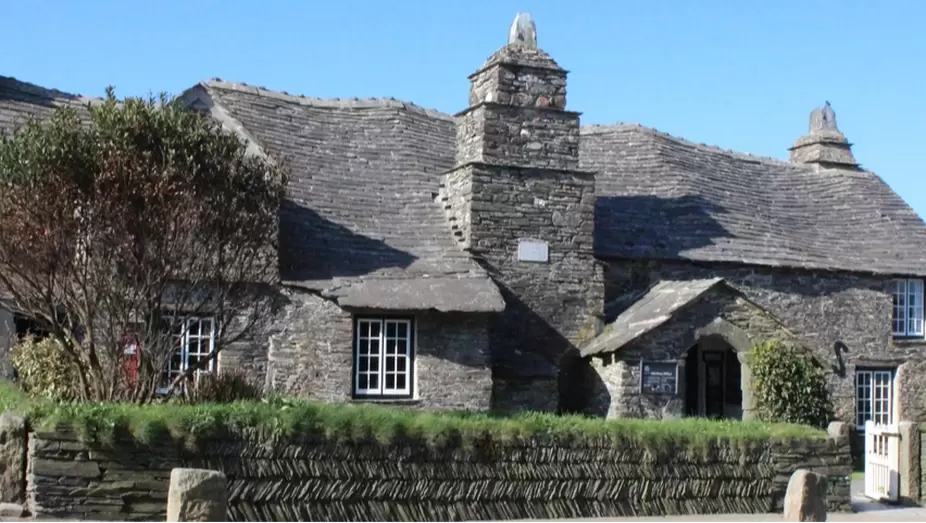
Boscastle
Located in an Area of Outstanding Natural Beauty, the harbor village of Boscastle is named as one of the most scenic villages on Cornwall's north coast. The tiny medieval harbor was built in the Elizabethan age and has a mixture of whitewashed cottages and slate houses. In the early 18th century this was a thriving port importing limestone and coal, and exporting slate and other local produce. Today the harbor is maintained by the National Trust.
The Bush Inn
The story goes that the Bush Inn has been a sanctuary for weary travellers since 940 AD, although its confirmed origin only goes back to the 1200s. "Only." It's still one of the oldest pubs in Cornwall. Over the centuries the uneven flagstones and polished wood furniture have probably seen more than their fair share of goings-ons. In fact, the inn's website says they are "riddled with history and intrigue" which means of course we need to explore.
In the 18th century, the inn was a popular haunt for wreckers and smugglers who operated along this coast and it's said to be one of the most haunted pubs in Cornwall. One of the most often recounted tale is of the ghostly sailor who lives by the pub’s staircase. We'll have to see about that.
It is widely believed that the Bush Inn was the inspiration for Daphne du Maurier's Jamaica Inn, because du Maurier was known to have visited the inn while living close by. Read the description of the Jamaica Inn (below) and you'll see that The Jamaica Inn also inspired the writer. So obviously, du Maurier went clubbing now and then and got inspiration from the tales of local smugglers.
In the 18th century, the inn was a popular haunt for wreckers and smugglers who operated along this coast and it's said to be one of the most haunted pubs in Cornwall. One of the most often recounted tale is of the ghostly sailor who lives by the pub’s staircase. We'll have to see about that.
It is widely believed that the Bush Inn was the inspiration for Daphne du Maurier's Jamaica Inn, because du Maurier was known to have visited the inn while living close by. Read the description of the Jamaica Inn (below) and you'll see that The Jamaica Inn also inspired the writer. So obviously, du Maurier went clubbing now and then and got inspiration from the tales of local smugglers.
The photos above are from their website. Learn more here.
Forrabury Stitches
These are some of the last remnants of a rare medieval Celtic crop rotation farming system still being practiced today. Land is ploughed into 42 'strips' with 1-2 feet of grass planted on a raised bed in between. The 'stitches', or strips, are still farmed in the traditional way, with crops rotated yearly and a fallow period when animals are allowed to graze. The Forrabury Stitches are one of only three places in Britain where this method of farming is still practiced.
Crackington Haven
Crackington Haven lies within the Cornwall Area of Outstanding Natural Beauty. The SWCP goes right through this little cove, where the geology is so remarkable it has a geological phenomenon named after it: Crackington Formation. This site has lots of good info!
Amazingly enough, some of the rock material in the area started out at the Equator before being moved by forces unknown (except to geologists I assume) to this little section of the Cornish coast. The rocks were formed 325 million years ago in the Carboniferous period and were compressed during the last Ice Age into the folds we see today.
The Manor of Crackington was recorded in the Domesday Book (1086). According to Doomsday records, there was "half a hide of land and land for 3 ploughs; 1 plough; 2 serfs; 6 smallholders; 4 acres of underwood; 20 acres of pasture; 4 cattle; 3 pigs; and 25 sheep. The value of the manor was 10 shillings though it had formerly been worth £1 sterling. Go here info about the Doomsday Book.
Amazingly enough, some of the rock material in the area started out at the Equator before being moved by forces unknown (except to geologists I assume) to this little section of the Cornish coast. The rocks were formed 325 million years ago in the Carboniferous period and were compressed during the last Ice Age into the folds we see today.
The Manor of Crackington was recorded in the Domesday Book (1086). According to Doomsday records, there was "half a hide of land and land for 3 ploughs; 1 plough; 2 serfs; 6 smallholders; 4 acres of underwood; 20 acres of pasture; 4 cattle; 3 pigs; and 25 sheep. The value of the manor was 10 shillings though it had formerly been worth £1 sterling. Go here info about the Doomsday Book.
MAY 2024
LOOE AREA
WALKING FOWEY TO PORTWRINKLE
Looe is divided into two distinct parts - East and West - with the Looe river running smack through the center of town. In medieval days, the two sides were considered separate towns. The river is spanned by a seven-arched Victorian bridge which was built in 1853 to replace a 15th-century structure. East Looe is the main tourism center, with narrow streets lined with shops, cafes, and pubs and boasts a sandy beach as well as the fishing harbor: the town has its own fishing fleet and is well known for shark fishing.
Across the Victorian bridge is West Looe, with its 16th century Jolly Sailor Inn and old St Nicholas Church. West Looe is more relaxed and tends to get fewer visitors but also has shops, restaurants and hotels. The beach on this side is largely rocky.
Most of Looe was razed in 1625 by a band of Barbary Pirates who had been terrorizing the coast and kidnapping fishermen for years. Looe recovered and went on to become a hub for Cornwall's famous smugglers, a trade that carried on for much of the 18th and 19th centuries. There are still a number of medieval buildings in Looe, including St Nicholas' Church, which somehow survived the pirate attacks.
Across the Victorian bridge is West Looe, with its 16th century Jolly Sailor Inn and old St Nicholas Church. West Looe is more relaxed and tends to get fewer visitors but also has shops, restaurants and hotels. The beach on this side is largely rocky.
Most of Looe was razed in 1625 by a band of Barbary Pirates who had been terrorizing the coast and kidnapping fishermen for years. Looe recovered and went on to become a hub for Cornwall's famous smugglers, a trade that carried on for much of the 18th and 19th centuries. There are still a number of medieval buildings in Looe, including St Nicholas' Church, which somehow survived the pirate attacks.
2 SWCP HIKES:
PLACES TO CHECK OUT:
Liskeard
Liskeard is an ancient Cornish market town, with the first known reference in the 1086 Domesday Book. Liskeard had been one of the few ‘coinage’, or "tin assaying" towns since the fourteenth century, and the wealth created during the 19th century copper, silver, and lead mining booms helped Liskeard grow from a medieval market town into an industrial, commercial, and shopping center.
Lostwithiel
Lostwithiel (pronounced lost-with-ee-ul) is tucked away in the Fowey (pronounced foy) valley and is surrounded by 'the loveliest inland scenery in Cornwall', according to Arthur Norway, a 19th century travel writer. The small town was founded by Norman lords in the early 12th century when they built the Restormel Castle.
Restormel Castle
Constructed after the Norman conquest of England, Restormel Castle was most likely built to control the crossing at the River Fowey. It is the best remaining example of a circular castle in the United Kingdom. The name “Restormel” comes from the Celtic ros tor moyl, meaning a bare spur of a hill. The castle was once a luxurious residence for the Earl of Cornwall and one of the four chief Norman castles of Cornwall. Some researchers believe it was the first castle built by the Norman conquerors. But even if it wasn't the first, it's REALLY old.
By the 16th century the castle had fallen into ruin and so much plundering and pillaging had taken place that when antiquarian John Leland visited in the mid-1500s, he remarked on the "utter defacement" of the castle:
“the timber rooted up, the conduit pipes taken away, the roofe made sale of, the planchings rotten, the wals fallen down, and the hewed stones of the windowes, dournes, and clavels, pluct out to serve private buildings; onely there remayneth an utter defacement, to complayne upon this unregarded distresse.”
“the timber rooted up, the conduit pipes taken away, the roofe made sale of, the planchings rotten, the wals fallen down, and the hewed stones of the windowes, dournes, and clavels, pluct out to serve private buildings; onely there remayneth an utter defacement, to complayne upon this unregarded distresse.”
The castle includes a bailey (learn how to build your own bailey here) and a well-preserved shell keep, built in the 11th century in a rare circular style. Unusually for a castle, the chambers — including kitchens, Great Hall, and guest rooms — are arranged along the outer circular walls. Restormel is now owned by the Duchy of Cornwall and cared for by English Heritage.
Jamaica Inn
In 1750, when coaches first started linking the towns of Launceston and Bodmin, the Jamaica Inn was the resting place for weary horses and travelers as it's halfway between the two. It's been is use for the same reasons since then. (Although there is no longer stabling for your horse; so maybe leave him at home.)
Supposedly, Jamaica Inn is Cornwall's most famous smuggling inn, and said to be the setting of Daphne du Maurier best-selling novel Jamaica Inn. In 1930 Daphne got lost horseback riding late one night and stayed in Bedroom 3 of the inn to recover. While there she began the book.
It is said that most of the the brandy and a quarter of the tea smuggled into the UK was landed along the Cornish and Devon coasts. As the Jamaica Inn was so remote, it offered an ideal stopping place for contraband. Smuggling stories abound here.
Much of the inn has been carefully preserved, and many of the 36 bedrooms and suites offer breath-taking views over the moor. There's also a Smuggling Museum full of artefacts and a film of tales of famous (infamous?) Cornish smugglers, wreckers and villains.
Supposedly, Jamaica Inn is Cornwall's most famous smuggling inn, and said to be the setting of Daphne du Maurier best-selling novel Jamaica Inn. In 1930 Daphne got lost horseback riding late one night and stayed in Bedroom 3 of the inn to recover. While there she began the book.
It is said that most of the the brandy and a quarter of the tea smuggled into the UK was landed along the Cornish and Devon coasts. As the Jamaica Inn was so remote, it offered an ideal stopping place for contraband. Smuggling stories abound here.
Much of the inn has been carefully preserved, and many of the 36 bedrooms and suites offer breath-taking views over the moor. There's also a Smuggling Museum full of artefacts and a film of tales of famous (infamous?) Cornish smugglers, wreckers and villains.
Jolly Sailor Inn
The Jolly Sailor Inn was established in 1516, making it is one of the oldest pubs in the UK. There are some interesting beams supporting the building, some from the Spanish Armada fleet from 1588 and another from HMS Indefatigable, one of the ships at the Battle of Trafalgar in 1805. The ship on the sign outside the pub is Indefatigable. There are lots of stories of ghosts, smuggling, and press ganging and crimping (kidnapping people to serve as sailors), and an interesting trap door that was used for darts.
Blue Peter Inn
The Blue Peter Inn was built into the cliff of the historic fishing village of Polperro back in the 16th century and today sits right along the South West Coast Path. The low beams, wood floors and panelled walls look a little like a captain's cabin on a galleon. The upstairs dining room offers breathtaking views of the sea and boats bobbing in the harbor.
